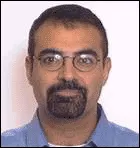Rohit Daniel Wadhwani's research and teaching interests lie in business and financial history and public policy. He received his B.A. with honors from Yale College in 1991. From 1991 to 1995 he worked as a management consultant with APM Inc. (now part of CSC), a leading consulting firm in the healthcare industry. Wadhwani earned his Ph.D. in history at the University of Pennsylvania, where his research focused on the institutional and regulatory origins of popular banking in the United States. He has received awards and fellowships for his work from the Social Science Research Council, the Sloan Foundation Program on the Corporation as a Social Institution, and the John E. Rovensky Fellowship Fund. He was interviewed by Laura Linard, the director of HBS Historical Collections.
Linard: Can you describe your research interests and background? What was the topic of your dissertation at the University of Pennsylvania?
Wadhwani: My research focuses on the historical development of banking services for ordinary Americans. In the early nineteenth century, banks primarily served the commercial financing needs of merchants, and a relatively small segment of the population held bank accounts. But, by the early twentieth century a large industry had emerged that provided basic financial services to the public. In the 1930s the modern regulatory framework for this industry was created. In broad terms, my research examines how this transition took place and explores how it reshaped household decision making and the development of the financial system more broadly.

What interests me in the topic is the extent to which the issues involved link developments in households, the economy, and public policy in the United States, both historically and in our own time. At the household level, consider the extent to which the evolution of these financial services have shaped personal opportunities and lifecycle planning—from the attainment of education during youth, to homeownership during middle age, to retirement savings during old age. At the policy level, an enormous amount of resources and regulatory effort goes into ensuring that the public has access to these financial opportunities; in fact, much of American social policy oriented toward the non-indigent operates through structured opportunities for saving and borrowing. And, of course, for the financial sector the expanding involvement of households—both as savers and as borrowers—has had an enormous effect on the range of products and services offered. Important changes taking place at all of these levels—in household economic planning, in the financial sector, and in public policy—help explain the profound popularization in banking in the nineteenth and early twentieth centuries. And my research seeks to bring these together in explaining the reasons for the expansion in access to financial services.

Rohit Daniel Wadhwani
My dissertation focused specifically on the development of savings institutions, or what are commonly called thrifts: savings banks, savings and loan associations, and credit unions. Savings institutions were really the first financial intermediaries established specifically to serve the personal saving and borrowing needs of middle-class Americans. They laid the foundations for the eventual entry of commercial banks, brokers, and other intermediaries into serving the middle-class market. My thesis at Penn examined how and why these institutions were established and regulated as well as how Americans used them for financial planning for such needs as homeownership, retirement, and income during periods of unemployment.
Q: The purpose of the Harvard-Newcomen Postdoctoral Fellowship award is to enable scholars who have received a Ph.D. in history, economics, or a related discipline within the past ten years to improve their professional acquaintance with business and economic history, to increase their skills as they relate to this field, and to engage in research that will benefit from the resources of the Harvard Business School and the Boston-area scholarly community. What are you planning to focus on during your year here at HBS? Is there something specific you are hoping to achieve?
Savings institutions were really the first financial intermediaries established specifically to serve the personal saving and borrowing needs of middle-class Americans.
— Rohit Daniel Wadhwani
A: I have several goals for the year. First, I am working on converting my thesis into a book manuscript and seeking a publisher for it. This includes filling a few gaps in my research by using historical collections that are housed here at HBS and at a number of other libraries in the Boston area. Bank records have been relatively well preserved and provide a wealth of information that historians can use for a number of purposes. I am also planning on writing a couple of journal articles related to the book.
In addition, I am beginning a comparative examination of savings institutions in collaboration with Professor Paul Thomes of Aachen University in Germany. Professor Thomes is an expert on the history of German savings institutions and has written on the German financial system more broadly. We are just beginning our planning for the project, which will look at savings institutions in the U.S., Great Britain, and Germany.
Q: Do you consider yourself a business historian; if not, what is the role of business history in your primary research interests?
A: I do consider myself a business historian, though my research also ventures deeply into the realms of political and social history. A significant portion of my dissertation examines the public policy and legal changes that allowed, and even promoted, the expansion in access to financial institutions and services. And I consider my research on how people used the institution—to financially plan for migration, for example, or to purchase a home—as central to understanding the popularization of finance and its role in American life, though such issues are often categorized under social history. But at the very heart of the story lie the institutional changes that paved the way for the rise of a new form of banking—the stuff of business history. Without that aspect of the research it's impossible to understand the transition I mentioned earlier. We can't begin to comprehend why and how banks began to develop financial services for middle-class Americans in the first place.
I see this eclectic approach to my topic as reflecting changes taking place in the field of business history more broadly. For some time now many business historians have been moving beyond the walls of the firm to consider the social, political, and cultural place of private enterprise in American society. As I see it, the trick—one that is not easy to pull off—is to examine these broader questions while not diluting the quality of one's research into the more traditional questions that business historians have focused on.
For some time now many business historians have been moving beyond the walls of the firm to consider the social, political, and cultural place of private enterprise in American society.
— Rohit Daniel Wadhwani
Q: The Newcomen Fellow is expected to participate in the school's business history courses, seminars, and case development activities. Can you tell us about your teaching experience here at HBS? I imagine that your previous teaching experience was with students in the Arts and Sciences Department at the University of Pennsylvania. Is it a different experience to teach to MBA students? How?
A: I had the opportunity to teach a course called "Creating Modern Capitalism," which is part of the "Foundations" program that incoming MBAs are required to take. It is really a wonderfully ambitious course that introduces students to the history and practice of business in four leading economies: Great Britain, Germany, the United States, and Japan. Teaching it was indeed a very different experience than instructing an undergraduate Arts & Sciences class. The largest adjustment I had to make was getting used to the case method. The quick pace and fluid discussion of case-based teaching was very different from lecturing. As some of the senior historians here at HBS had warned me, I had much less control over what happened in the class, a situation that made the experience simultaneously exhilarating and terrifying. I also had to learn when and how to step back in order to allow students to share their personal experiences on a particular topic or situation. Many of my students had incredible first-hand experiences with the topics we covered, whether it was the Toyota Production System or cartels in the steel industry. That was one of the real differences in teaching MBAs; part of my job was to try to tap the wealth of their collective experience and knowledge so that they could, in fact, learn from one another—a very different task than the one an undergraduate Arts & Sciences professor faces. I have to say, though, that ultimately it was the fact that my students were eager, well prepared, and really wanted the class to go well that made my job manageable and made the class a rewarding and memorable experience.
I have also had the opportunity to attend Professor Richard Tedlow's elective class, "The Coming of Managerial Capitalism." Anyone who has attended this class would, I think, agree that it is the kind of classroom experience that stays in your memory, not least because of Professor Tedlow's humor and wit.
For me, it's really a chance to improve my understanding of teaching approaches to a topic I plan to spend a large portion of my career [teaching]. One of the peculiar aspects of training and education for academics is that learning how to teach well in a classroom is one of the skills that Ph.D. programs spend little, if any, time on. Yet teaching comprises an enormous part of the responsibilities of a professor. I long ago realized that watching a master teacher like Tedlow really is the only way to learn the craft. So I watch and take notes on his intellectual and pedagogical approach and try to think about what might work for me. It really is a wonderful chance for me to pick up much of the content and approach for the type of class I hope to be teaching in the future and to avoid the kind of overwhelming, trial-and-error teaching experience that new assistant professors often struggle with in their first positions when developing their own courses.
